With the increasing drive to eradicate BVD across the UK, the survey provides vital information for farmers to review their own approach to BVD control. It may raise some questions, and you’re best chatting to your vet for further advice to make sure you’re protected against this costly disease.
Of the respondents, the majority were dairy farmers, with a good proportion of mixed and beef producers. See Figure 1.
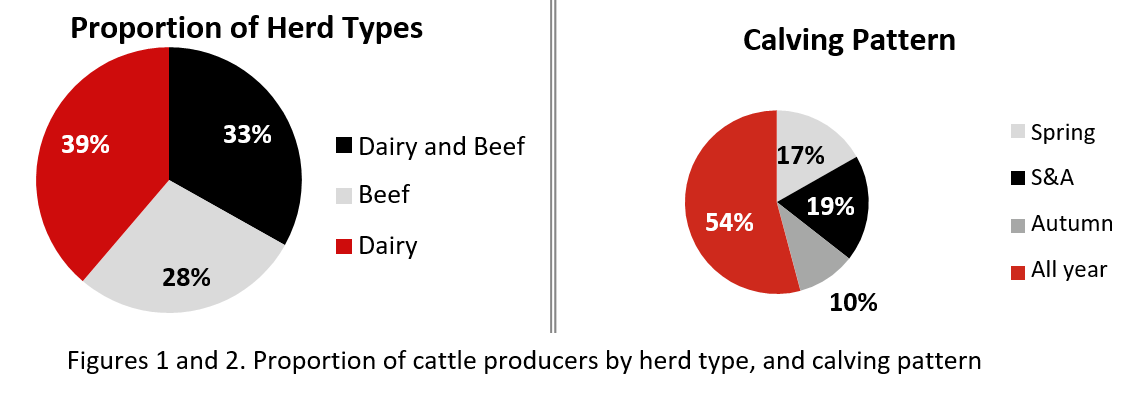
The herds represented showed a mainly all year round calving pattern, as seen in Figure 2.
Biosecurity
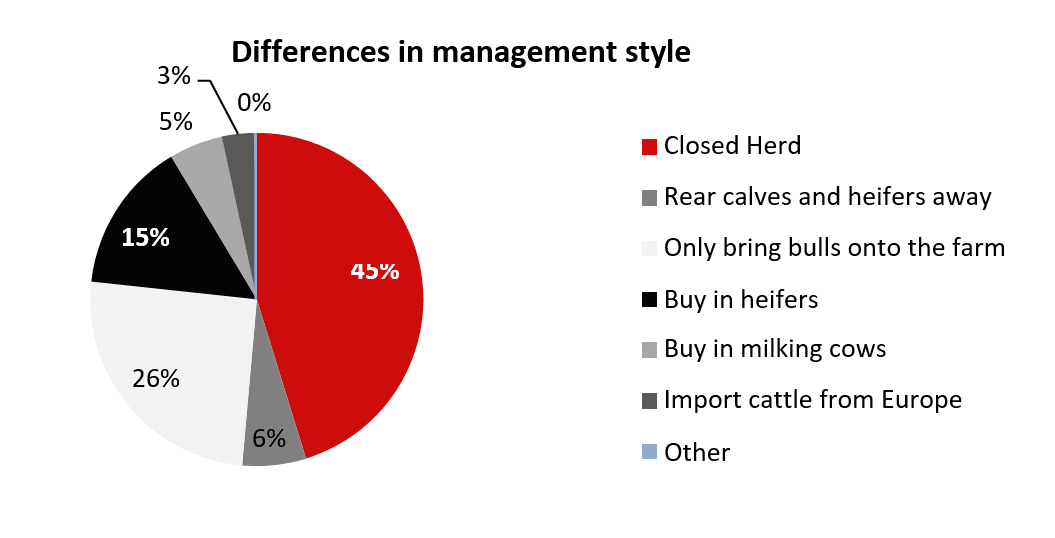
Of all of those asked, 61% of herds reported to be closed (see Figure 3), but almost one in four (23%) of those ‘closed’ herds brought bulls onto the farm, which can often be a route to BVD breakdown.
Impact of BVD
Over half the farmers (54%) have had a BVD problem in the past or are currently suffering from BVD, with the most common impact they experienced being poor fertility. See Figure 4.
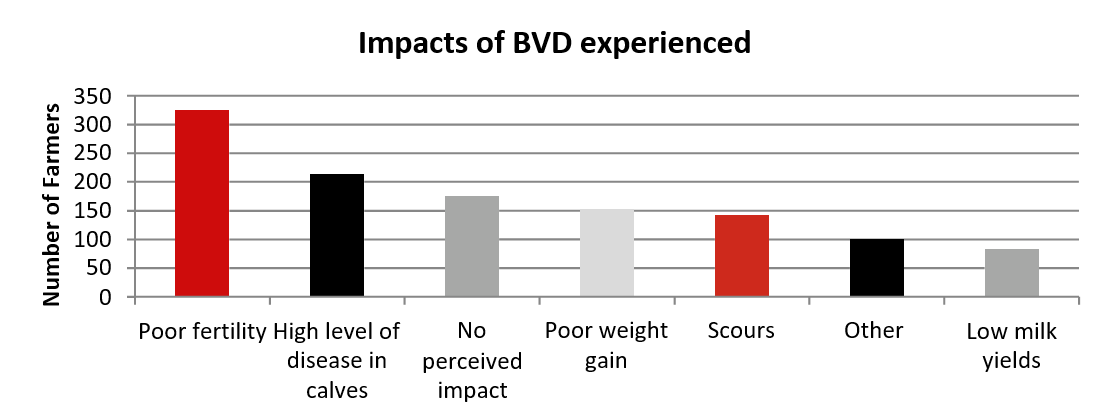
When it came to the economic impact of the disease, most farmers put a benefit of being BVD free at £40 per cow, which fits with many studies on the impact of this costly disease. See Figure 5.
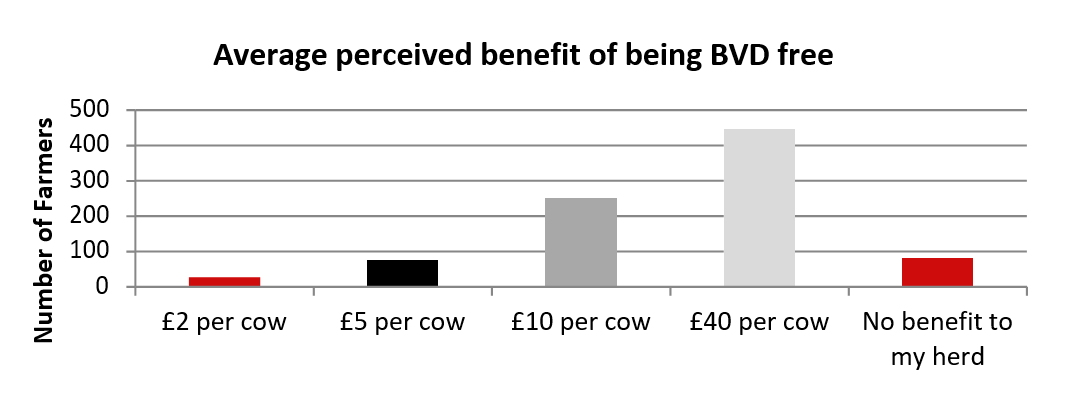
BVD Eradication
With the impending roll out of a national BVD eradication scheme for England in July, and plans for a scheme for Wales, 77% of respondents reported they were aware of these schemes. This appears to be welcomed by the majority of farmers, with 95% keen on such a scheme. See Figure 6.
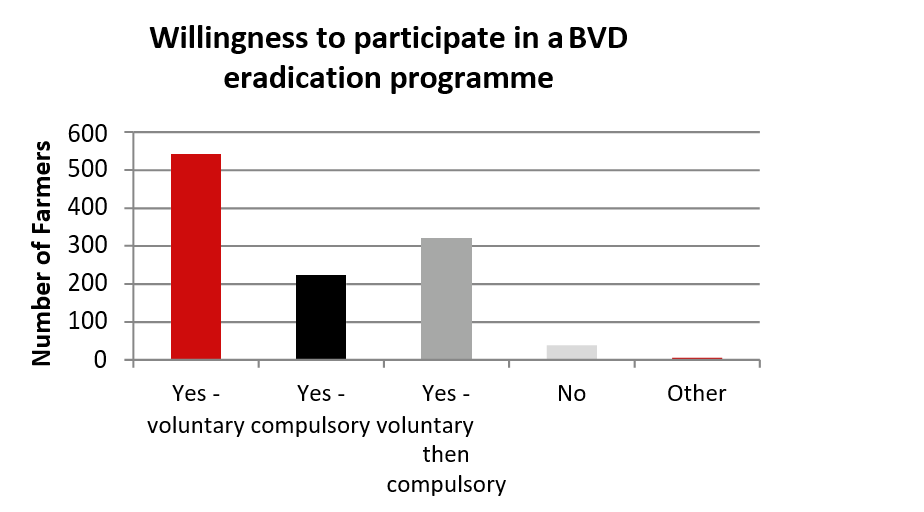
Two thirds of farmers (68%) recognised the importance of identification of persistently infected animals (PIs), with 58% highlighting vaccination as a key part of BVD eradication. Other key aspects of BVD control were ear tagging calves to identify PIs, which was deemed to be more important than free vet visits to manage BVD eradication. See Figure 7.
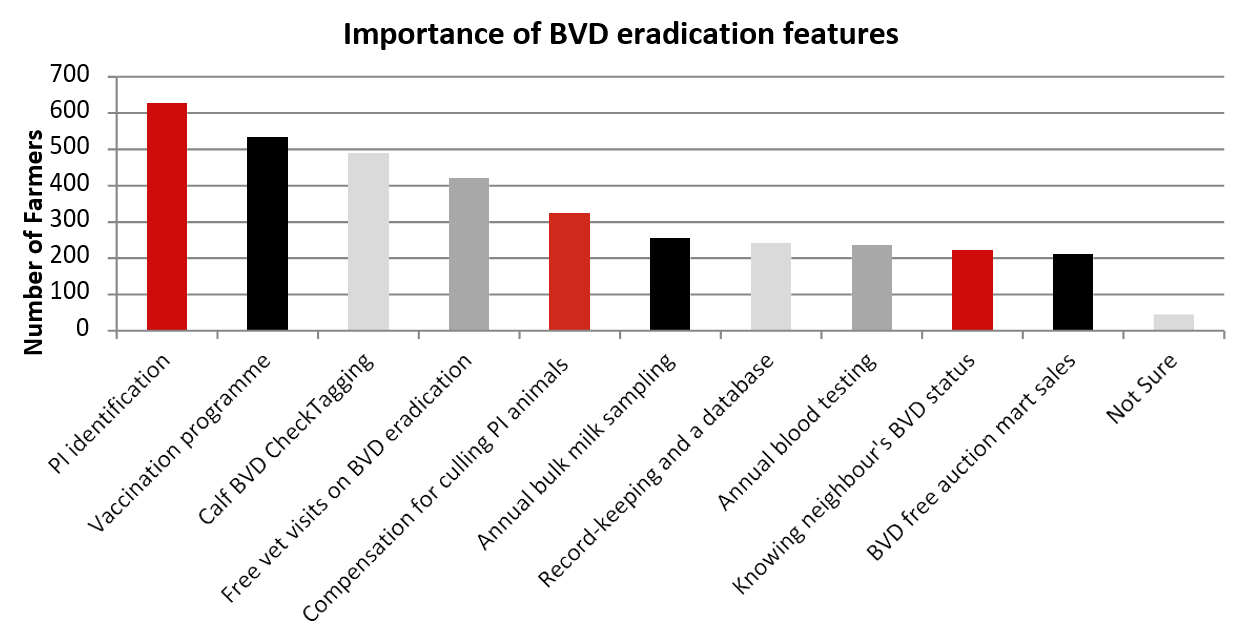
When it came to the preferred eradication scheme set up, the majority of farmers preferred a scheme involving screening of young calves with a BVD CheckTag, annual blood testing being the second most preferred, as seen in Figure 8.
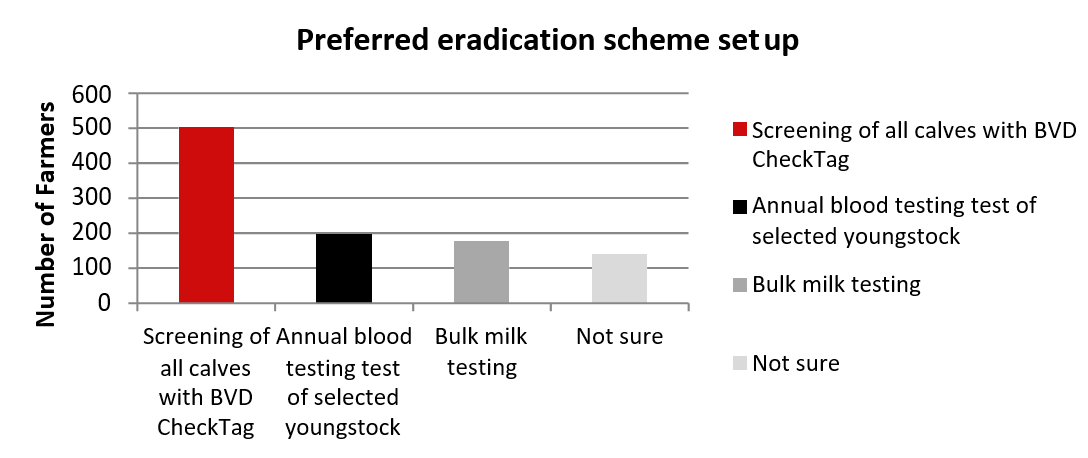
Type 2
Of more concern was that well over half of the farmers responding had never heard of BVD type 2, however a number were aware that there had been recent outbreaks in Europe and that the disease can often be more severe than BVD type 1, as seen in Figure 9.
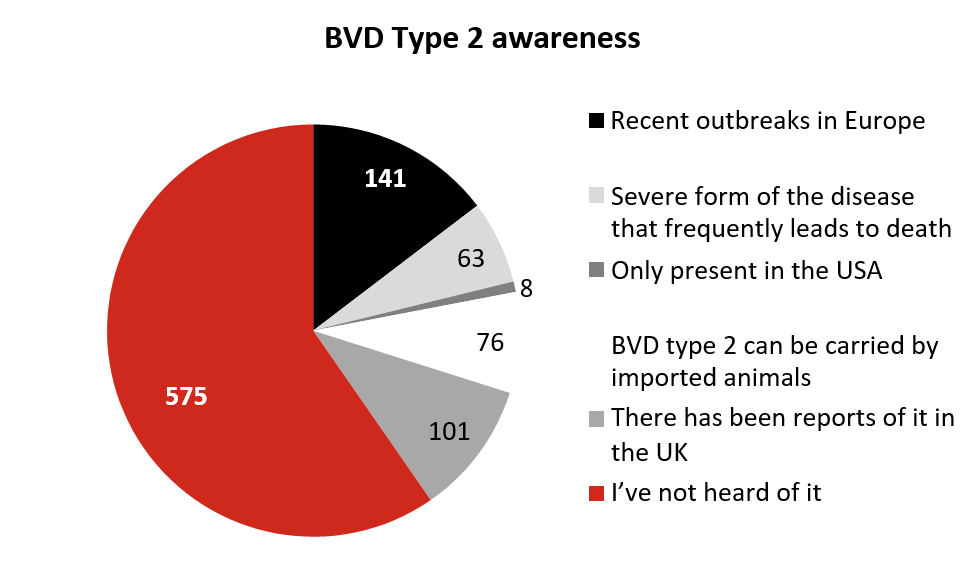
When asked about how to protect against the risk of BVD type 2, the majority of farmers responded by not buying cattle from mainland Europe, and equal proportions would only purchase tested and quarantined animals, or vaccinate with a type 2 containing vaccine. Only a small number mistakenly believed that all vaccines protect against BVD type 2. See figure 10.
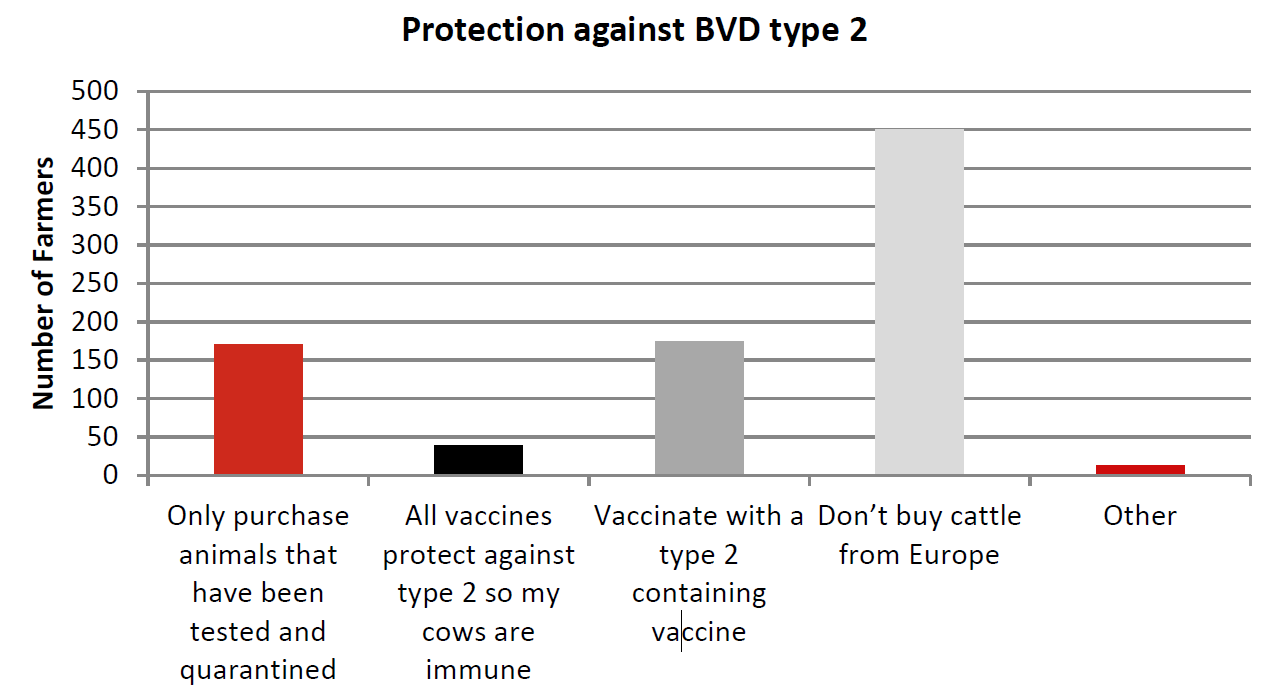
Speak to your vet
Finally, it is important to note that the majority of farmers see their vet as the most important source of BVD information, followed by the farming press. See Figure 11.
Some farmers reported to discuss BVD control on every routine visit, with most discussing it only once a year, as seen in figure 12. An increasing drive to eradicate BVD across the whole of the UK means there will be more discussion about this economically damaging disease, so this may result in this figure increasing over the next 6 months.
This survey provides a great insight into attitudes and approaches to BVD control from a large number of cattle farmers. The results are encouraging for the eradication scheme bodies, but they also provide further areas for vets and farmers to engage on this key disease area.
- An educational service from Boehringer Ingelheim Limited, Vetmedica, makers of Bovela. Further information available in the SPC or from Boehringer Ingelheim Limited, Vetmedica, Bracknell, Berkshire, RG12 8YS, UK. Date of preparation: April 2016. AHD9172. Use Medicines Responsibly (www.noah.co.uk/responsible)